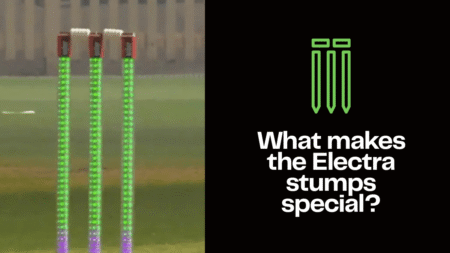

In 2014, the International Cricket Council introduced a law that could facilitate communication between the on-field umpires and the third umpire. This was known as the soft signal.
The umpire at the bowler’s end gives a soft signal as a visual communication which is accompanied by additional information via two-way radio where necessary. This soft signal represents the umpire’s initial on-field decision before commencing the umpire review. The umpire at the bowler’s end can make the soft signal after consulting the square-leg umpire.
The bowler’s end umpire then communicates to the third umpire by making a signal that resembles the shape of a TV screen and follows it with a soft signal of our or not out that is made at chest height. After reviewing the decision, the third umpire either makes a conclusive or an inconclusive decision. In case of the latter, the on-field decision that was a soft signal is considered as the final decision.
The soft signal law was routinely used in T20 leagues and other formats of cricket till 2020. In 2021, the Indian Premier League ceased the soft signal rule for being met with skepticism. The existence of the soft signal law in the first place was questioned as the third umpire had all the access to the technological advances in the decision-review system. This is further questionable when a soft signal is made in a boundary-check or a low-catch decision.
The International Cricket Council eventually abolished the soft signal rule in 2023. The third umpire thus has all the power now to make the final call without the intervention of the on-field umpires.








